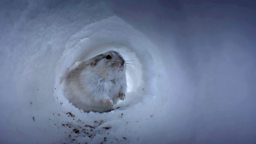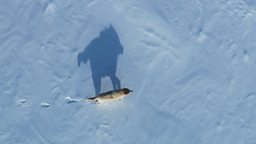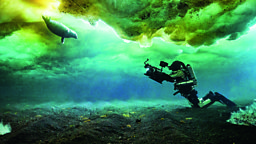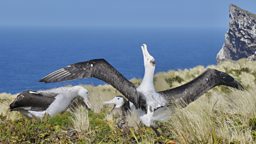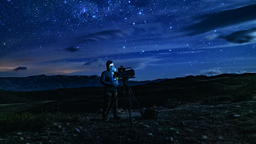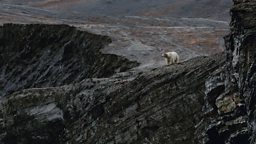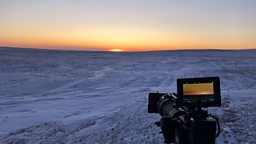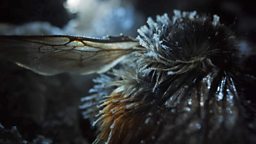Innovation and true grit to film seals under the sea ice
By Yoland Bosiger, Director for Frozen Planet II

One of the greatest challenges faced by the Antarctic team
One of the greatest challenges faced by the Antarctic team of Frozen Planet II was filming Weddell seal mothers teaching their pups to swim. Weddell seals are the most southerly breeding mammal and inhabit waters reaching -2°C – the coldest sea water on earth.

a hard-as-nails camera team
To film the story required an 8-hour military plane flight from New Zealand to McMurdo Station, a 5-hour daily commute by reticulated vehicle to the Weddell seal colony at Turtle Rock and a hard-as-nails camera team dressed in dry suits, gloves, hoods and layers of warm undergarments. But this story starts well before the journey to the ice with an idea from natural history cameraman and polar diver, Hugh Miller.

a noise and bubble-free dive
Hugh had filmed Weddell seals under the ice before, but the challenge was always the same. The Weddell seals would maintain their distance often just out of reach of the film teams' cameras. Hugh’s solution was to use technical diving units - closed-circuit rebreathers which recycle the diver’s exhaled breath and scrub out the carbon dioxide - allowing for a noise and bubble-free dive. But so far no film team had ever been granted permission to dive rebreathers in the cold waters that surround McMurdo Station.

first ever permission to film using rebreathers [in Antarctic waters]
Fortunately for Frozen Planet II, things started to change in 2018 with the testing of 7 different rebreathers by the US Antarctic Scientific Diver Program. Closely following these tests, the Frozen Planet II team of experienced polar divers: Justin Hofman, Hugh Miller, Erin McFadden and Yoland Bosiger were given the first ever permission to film using rebreathers.

The most important consideration was keeping the rebreathers warm
It takes years of training and perseverance to film with rebreathers even in the most benign tropical conditions. So diving in -2°C under a ceiling of ice was an enormous logistical challenge. The most important consideration was keeping the rebreathers warm as any moisture in the diver's breathing loop, counter lungs, injectors and valves could freeze and become potentially lethal.
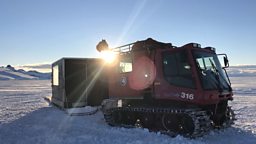
Diving like this is only for the most experienced, patient, and meticulous diver
To avoid these problems, rebreathers were set up in a heated hut and diving commenced from a predrilled hole in the ice a short walk away. Once in the water, the divers had to be very careful to avoid getting cold – especially their hands which were a lifeline for operating the rebreathers and cameras. Diving like this is only for the most experienced, patient, and meticulous diver. But the results were worth it.
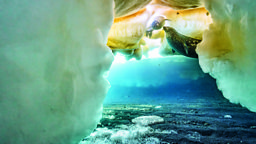
The team were able to witness behaviour that nobody has ever seen before
The team witnessed behaviour that nobody had ever seen before… Even by scientist Jay Rotella, who manages the 50 years old long-term data set on . When taking their pups for a swim, females would often be harassed by males trying to get a head start in the mating game. But rather than submit to the males' advances, females would launch full-blown underwater attacks - often drawing blood and causing gnarly wounds. Injuries to males have previously been thought to be the result of territorial fighting between other males – behaviour which was rarely seen on this shoot. Ultimately for Frozen Planet II, we focused our story on a mother who fought so hard she wounded a male, which seemed to drive him away.

It is no doubt the tip of the iceberg of our understanding of these superbly adapted Antarctic animals
Like many charismatic marine mammals, it is their short time spent on land that scientists and filmmakers know most about. Using rebreathers at McMurdo Station to properly investigate a small component of the Weddell seals' underwater lives was a privilege and an honour. It is no doubt the tip of the iceberg of our understanding of these superbly adapted Antarctic animals.

We thank the National Science Foundation for their support of this project.
